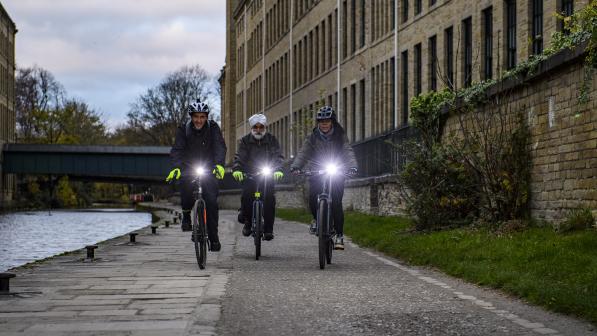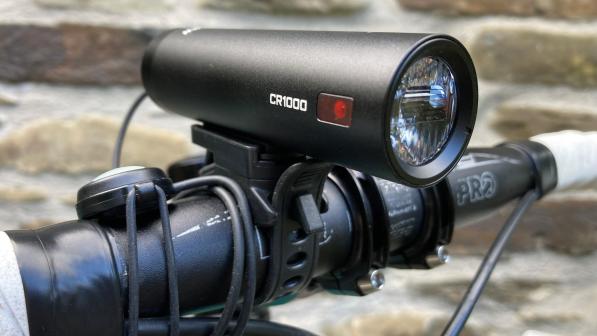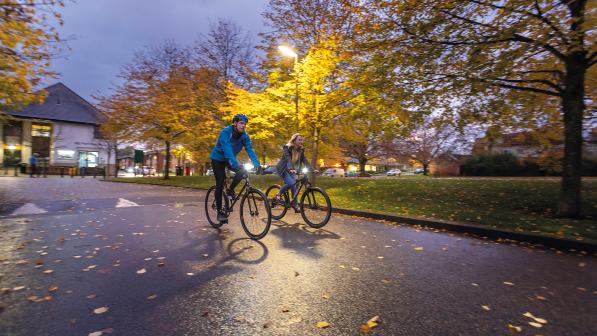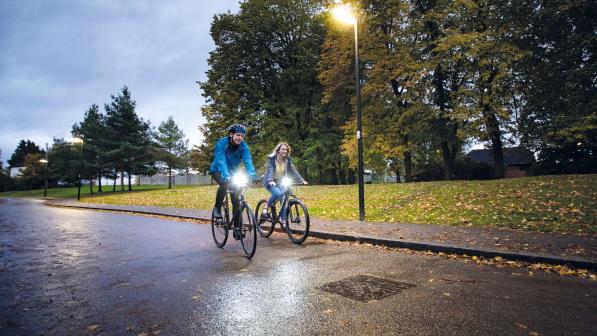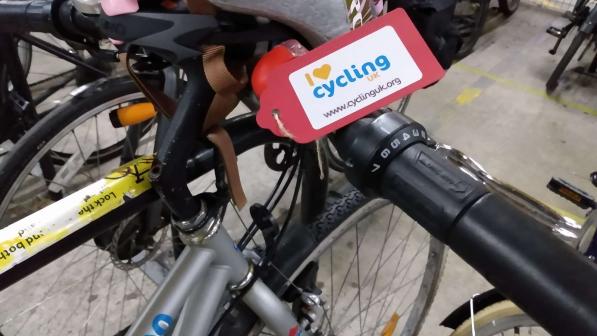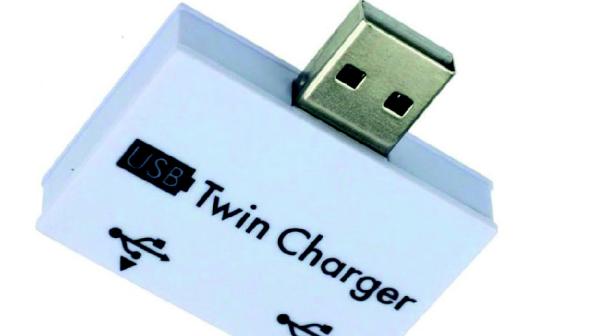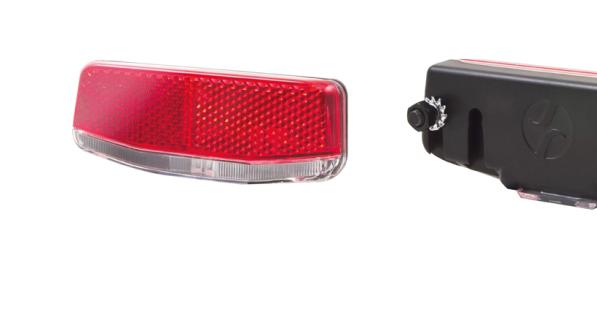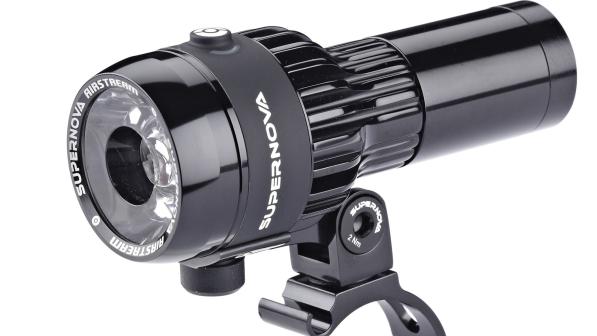A guide to bicycle lights

The autumn and winter period in the UK is never the easiest time for bicycle commuters who invariably have to contend with colder temperatures, increased rain and longer hours of darkness. Keeping warm and dry is hard enough, but keeping up with adequate lighting requires a proper test and review every year. In addition, the hostile environment we expect our lights to operate in is tough enough for any electrical item, so don't expect too much from them.
Batteries
The days of disposable battery bike lights are now nearly gone….there are a few cheap versions still available but they’re really not worth it. The one exception to this is the tiny blinky lights that can be used as a back-up to your main system. These lights run on watch-type batteries (CR2032 are the most common size), and they can run for many hundreds of hours with acceptable levels of light for such tiny units.
The vast majority of bike lights on sale now contain lithium ion/polymer batteries similar to those powering our mobile phones. These batteries can be made small enough and light enough to hold enough charge to give acceptably long burn times for most riders and can be easily charged by USB cable from the computer on your desk. Previously available rechargeable batteries were the NiCad or NiMH types which looked like the batteries of old but could be recharged; the problem with these being that if not used they would self-discharge quite quickly.
A note of caution with lithium ion batteries, however. When the winter is over and your lights are put away for the summer, you should take note of the manufacturer's instructions for what to do to preserve battery life. Most of them will have special procedures for you to 'tell' the light that you are shutting it down for more than a month. This puts the battery in a different state - one that will enable it to recharge properly when next winter inevitably arrives. It can be an expensive mistake if you don't follow the instructions (which will be buried somewhere in the paperwork!) as it is usually a condition of the warranty.
Front lights
Front lights need to be chosen carefully and take into account the sort of night time riding you're going to be doing. If you're only going to ride in urban areas, your main consideration is to 'be seen' by other road users. If you're going to be riding on unlit roads and paths then you will want a light that will help you to 'see' - you'll want a unit that is bright enough to show the potholes on the roads before your wheel disappears into one. You'll also want to see corners before you reach them!
With advances in rechargeable lithium batteries and LED technology, it is now possible for manufacturers to produce extremely high powered lights. For urban use, these are not necessary and are likely to dangerously dazzle other road users (which is not legal!). They are also likely to be heavier than a 'commuter' light and cost proportionally more. A front light producing up to 500-700 lumens with a flashing mode is ample for most urban riders, although having more than one light as back-up is also a good idea. Rechargeable Lithium batteries don't slowly fade when they run out of juice - they just stop. So you don't get much warning.

If you are going to be riding on unlit roads you might consider a different type of light. These circumstances call for a light with a bright, flat beam which tapers off to the sides and can be focused on a point on the road ahead of you. LED lights differ from the older filament-type lights because it is more difficult to focus them as precisely; some light will always escape the intended focal point and potentially dazzle other road users. Tests on available lights from leading manufacturers in 2013 proved that few of them fail to dazzle on their highest settings and it took too many clicks to reduce the beam to an acceptable level.
Most of the very high-powered lights for sale were designed for off-road only use and are consequently unsuitable for the road; the beam patterns here are designed so that riders can pick out dangerous low hanging branches as well as all the trees at the side of the trail. The problem is that an inconsiderate cyclist can put their high powered light on the front of their road-going bicycle and dazzle all the other road users.
For more information read this explanation of Watts, Lumens, Candles, and Lux by Cycling UK's former Senior Technical Officer Chris Juden.
Rear bicycle lights

Whilst the lumen count has steadily risen for front bicycle lights, rear lights haven't quite seen the same level of development. Whilst most of the lights available now have lithium ion batteries inside with USB charging functionality, the outputs have stayed the same. This is probably because most manufacturers have accepted the 0.5-watt industry imposed limit for rear light brightness.
However, there have been a few technological developments starting to arrive which are interesting.
- Some dynamo rear lights can sense when you're braking and increase the brightness of the light accordingly. This, like a lot of 'improvements' is more likely to make the rider 'feel' safer than actually make much difference to the actions of the car behind. But ultimately, anything that draws the eye of another road user should be seen as a positive. Dynamo and dynamo-derived rear lamps invariably conform with German regulations, so they tick the legal approval box and incorporate the retro-reflector you also need by law. But German regulations don’t allow flashing, so they won’t do that.
- Cateye and Exposure have a similar sensing function available in a USB rechargeable rear-light. Theirs too will get brighter when you slow down for a junction.
- Garmin has developed a rear light which includes a radar to warn the rider by way of a handlebar mounted display of a vehicle approaching from the rear. The light itself, when paired with a Garmin computer also adjusts its brightness depending on the available light.
It is worth bearing in mind that only bicycles are allowed to show a flashing red light to the rear, so it is a great differentiator for drivers eyes in difficult conditions; they won't mistake you for something faster. So it makes sense always to show a flashing rear light even if you have one with a solid beam as well. The combination also makes it easier for the driver to pinpoint your position.
Dynamo lighting

Dynamo lighting has come a long way since the venerable Sturmey Archer hub dynamos and the bottle dynamos of yesteryear. The glow worm systems that regularly blew the filament bulbs were never really loved. But once Shimano and Son started making more efficient hub based dynamos and in Germany, it became law that all 'town' bikes must have a dynamo lighting system, consequently development of the batteryless system accelerated.
Modern systems made by the likes of Busch & Muller can now output up to 8000 candelas (shown as 80 lux) in the centre of the beam with LEDs generating the light. They 'manage' these powerful LEDs by pointing them back into the lamp shell towards a mirror which is better able to re-direct the light through the lens. This then focuses the light without dazzling other road users - much the same way that modern car headlamps do.
The German approval system has some strict rules and LED powered bike lights with their habit of emitting light 'everywhere' were always were going to be difficult to get approved. However, the beam controlling mirror system has meant that they have relaxed the dynamo-only rule for town bikes.
So whilst entry-level bottle dynamos are still available, hub dynamos are the only sensible solution for generating your own electricity - they drag less and you don't wear out your tyre wall. Most systems now have features such as automatic switching between night and daytime modes and 'standlight' technologies; so your lights don't go out when you stop at the lights. There are even models with USB charging points so that you can recharge your mobile phone or GPS unit whilst you're on the move.
Fitting bike lights
Battery powered bike lights, be they the conventional type or newer rechargeable lights, are generally made so that they can be easily removed from your bike without requiring tools. There are security reasons for this (they will get stolen if left on the bike) and you may need to remove them regularly to recharge/change the batteries.
Most battery-powered front lights are 'designed' to sit above the handlebars, however it creates more space for riders if they are 'hung' underneath. Exposure lights has developed a bracket which fixes to the centre handlebar clamp and puts the light well in front and below the bars; so away from the rider's hands - this system also protects what could be an expensive light in the event of a tumble.
Battery rear lights usually clip onto the seatpost, where you have to be careful that they are not obscured by jackets and low hanging bags - it's easily done. Some also have seat stay mounting options - these sometimes work but often they aren't very secure on such a slim tube, so the lamp slips round to point sideways, downwards, or even worse, goes in to the spokes!
Dynamo lights are bolted to your bike; the reason being that they have wires which connect them to the dynamo unit and to each other so they do not need to be moved once fitted. It is also for this reason that dynamo headlamps are fitted to the fork-crown - it keeps the cable to hub dynamo as short as possible and keeps the lamp and the wire away from your handlebars. It is possible, if you wish, to hang a dynamo lamp from your handlebar or any other place else, but you will have to buy a hard-to-find bracket or make one yourself.
Similarly, rear dynamo lights are usually bolted onto the rear carrier or mudguard, where they will not be obscured by anything else on the bike.
With the relaxation of the German regulations regarding battery lights, battery versions of dynamo rear lamps are now available that likewise bolt onto any carrier that has the standard European fixings – two rear-facing 5mm holes, horizontally separated by either 50mm or 80mm. Mudguard-fixing battery lamps can also be found, but the weight of the batteries tends to accelerate the failure of plastic mudguards.
We have previously written about the prevalence of helmet-mounted lights and how useful they can be for illuminating road signs and fixing punctures in the dark. However, the exponential increase in the lumen output of small powerful LED lights has meant that a light on top of a person’s head, is at some point going to cross the eye-level of another person – and usually when they’re close enough to be dangerously dazzled.
So unless you’re heading into the woods for off-road riding in the dark, think about other road users and mount your most powerful light on the handlebars where it belongs, whilst limiting your head-torch to the minimum necessary (as a rough guide, between 10 and 50 lumens) to illuminate signs and provide extra visibility. It is also worth mentioning that powerful helmet-mounted lights do nothing to help motorists who see a light that is not only exceptionally high from the ground, but which keeps moving about as the rider looks over his shoulder.
Standardising bicycle lights
In 2013, Germany relaxed its dynamo-only rule to allow StVZO-approved (German road traffic permit regulations, Straßenverkehrszulassungsordnung) battery lights to be used on all kinds of bikes, and not just lightweight racing bikes. At the same time, Germany and France were cooperating on a new ISO for cycle lamps, which would likelybe adopted by Europe and replace the confusion of different national standards. There are more battery lights on the market now that have the same well-designed optics as German dynamo lights.
However, whilst the Department for Transport has promised to reform our completely out of date and confusing cycle lighting regulations for years, still, nothing has changed.
It could be that they were waiting for that European standard to replace BS6102/3. But the recent result of Brexit and the years of negotiation we now face will mean any short term reforms are unlikely. So whilst most of us are happy to accept the approval of the German standard lights and await the eventual confirmation of that by a Franco-German CEN standard, it is sad that the majority of British cyclists, doing their honest best by fitting lights that are good and bright, and which the police recognise as such, are nevertheless breaking the law.
Hopefully, something will happen sometime soon.
What lights are right for you?
Still confused over what sort of battery powered front lights you need? Our helpful flow chart should point you in the right direction.

